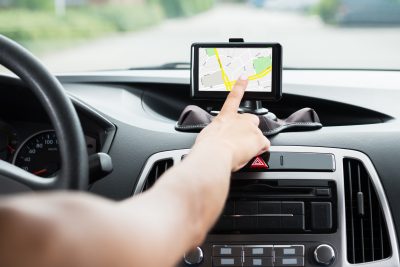With the official first day of spring just under a week away and the distribution of COVID-19 vaccines accelerating, it’s tempting to get away for a long-awaited vacation. While spring break is a welcome respite from work and school routines for families, COVID-related concerns still mean precautions are necessary when choosing how and where to travel responsibly as a family this year. Regardless of what your vacation plans entail, it’s also important to keep in mind that traveling can have a negative impact on the environment.
Fortunately, there are a variety of ways for individuals to take action for cleaner air by incorporating sustainable practices into the way that we travel. Here are some helpful tips to consider for safely reducing your transportation footprint this spring to help improve the region’s air quality:
- Travel Light – Greener travel starts before even leaving the house. The more weight trains, planes, and automobiles have to carry, the more fuel they use, and the more harmful greenhouse gases are emitted into the atmosphere. As a result, these emissions have a negative impact on the climate – including worsened air quality – and pose many threats to human health. Though you’re likely to have plenty of extra hand sanitizer, antibacterial wipes and masks on hand, be conscious of how many extra items overall you are packing to lighten the load and help keep the air quality in healthy ranges.
- Drive, Don’t Fly – The most pandemic-friendly and eco-friendly option for your spring vacation travels is to drive. If you’re traveling by your own personal vehicle, routine maintenance steps like checking engine performance, keeping tires properly inflated, replacing air filters and changing oil regularly are all ways to help reduce emissions and fuel consumption, saving money at the pump and cleaning the air. Following the speed limit also saves fuel and prevents unnecessary air pollution. Traveling by bus or train are also great options that can offer a certain level of convenience, particularly if the weather and roads are bad along your travel route. Per that latest Centers for Disease Control and Prevention (CDC) mandate, don’t forget your mask as they are required by all passengers on public transportation to minimize the spread of the novel coronavirus.
- Make Your Stay a Greener One – One of the safest ways to get away is a vacation home rental, which allows you to be socially distant from other travelers and reduces your risk of contracting or transmitting the virus. Since the number of people staying at the home is limited to your family or small group, vacation rentals are great alternatives to the higher-risk hotels, motels and lodges that have a much larger carbon footprint. With the home-like atmosphere of a vacation rental, guests are also more likely to do things like turn off lights or electronics before leaving a room and keep the thermostat at a reasonable temperature, not just out of environmental thinking but because this is normal behavior in a house and is more convenient.
A few small changes are all it takes to help people all over the St. Louis region stay safe and breathe easier during one of the busiest travel times of the year. For more clean air tips, visit www.cleanair-stlouis.com, like us on Facebook and follow us on Twitter at @gatewaycleanair.


